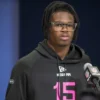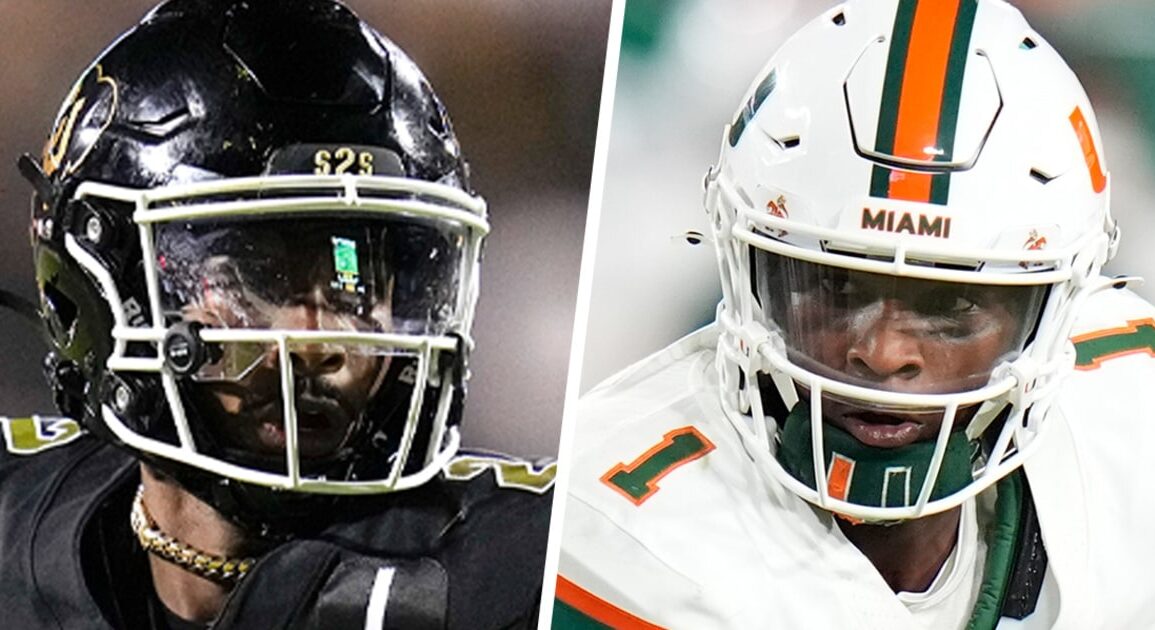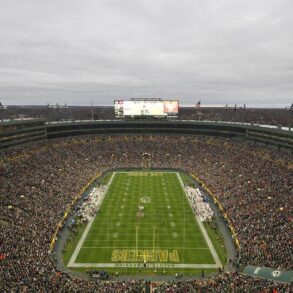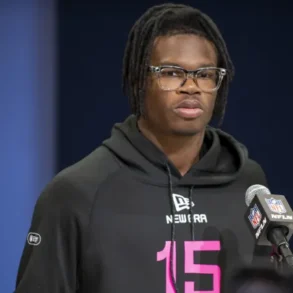
One year after six quarterbacks flew off the board in the first round of the NFL draft, the teams that took those risks are largely optimistic marching into the 2025 season.
But the bevy of quarterback-needy teams sitting toward the top of next week’s draft might not be so lucky, as teams and analysts don’t appear nearly as high on this crop of prospects as they were last year’s.
While Miami’s Cam Ward, a Heisman Trophy finalist, is the overwhelming favorite to go first overall to the Tennessee Titans, the outlook for the rest of the quarterbacks appears muddy. That’s in no small part because quarterback-needy teams spoke with their wallets this offseason, doling out deals to journeymen and late-career veterans instead of creating a drumbeat around drafting a quarterback of the future.
“If you’re a team in need of a quarterback and Cam Ward is the best quarterback on your board, you have to take him whenever you’re picking,” Bucky Brooks, a former player and pro scout-turned-NFL Network analyst, said on the “Move the Sticks” podcast this week. “But in terms of how these guys stack up … I don’t believe anyone in this class is a transcendent quarterback.”
Still, a handful of teams have major question marks at what’s quite possibly the most important position in professional sports, including multiple teams with top-10 picks in the draft (like the New Orleans Saints, amid the news that Derek Carr’s injured shoulder has jeopardized his availability for next season).
And the allure of finding the answer in the draft, particularly with a first-round pick that can lock in as a long-cost solution, means that even in a down year for quarterbacks, uncertainty and pressure to compete will result in a handful of them gluing themselves to their phones waiting to see whether their names will be called early.
Connor Rogers, an NBC Sports NFL draft analyst who also co-hosts the “NFL Stock Exchange” podcast from Pro Football Focus, said the last-minute swirl around quarterbacks in a relatively weak class shows the “insane curve quarterbacks get” when teams are “hoping for upside.”
“If a guy has tools, even if the hit rate is low, it completely alters the draft capital it will take to get him,” he said, adding that league rules capping rookie quarterback contracts can potentially bring a team an “insane advantage.”
With Ward as the consensus No. 1 selection, media personalities and draft experts almost unanimously project Colorado’s Shedeur Sanders as a first-round pick in their mock drafts. Ole Miss’ Jaxson Dart has also been gaining steam in recent weeks, and Alabama’s Jalen Milroe is among the 17 players who the NFL says will attend the draft in person.
Rogers views Ward as a “top-15 pick” even in last year’s stacked quarterback draft class, which featured Caleb Williams and Jayden Daniels. He sees Sanders, however, as someone with the talent to be taken in the back end of the first round in a “desperate class like this.”
Dart and Milroe have high upside, too, but Rogers suggested they may need time to develop before they start in the NFL. Dart, he said, needs to become more comfortable working from under center, and Milroe must improve his consistency throwing the ball.
NFL Network analyst and former pro scout Daniel Jeremiah outlined a similar view on Ward and Sanders on a call with reporters ahead of the NFL scouting combine. He said his grade for Ward matches the pre-draft grade he gave last year to Bo Nix, the former Auburn and Oregon quarterback and the 12th overall pick in 2024. And Jeremiah’s grade for Sanders falls just behind what he gave Washington’s Michael Penix Jr., his sixth-ranked quarterback that year, whom the Atlanta Falcons surprisingly took with the eighth pick.
Both Ward and Sanders have been successful across multiple schools in their long college football careers — Ward’s career culminating as a Heisman Trophy finalist and the winner of the award given to the nation’s top quarterback, while Sanders won the award given to the top senior quarterback. And even if Ward and Sanders compare more with the back end of last year’s class, Nix is fresh off of a successful rookie season in Denver and the Falcons are leaning on Penix as their starter after he showed some promise at the end of the season.
But Rogers said comparing the last two draft classes is a good lesson of supply and demand. Last year, the demand for quarterbacks was big, but “the supply was good.” Now, things are different.
The top of Thursday’s draft runs through the Tennessee Titans, a team that has struggled to find its footing at the position in the last few years and holds the first overall pick. Quarterback Will Levis, the team’s second-round pick in 2023, started the majority of the team’s games last season but had a mercurial and injury-plagued season. It’s not clear whether he has shown enough promise to get another uncontested shot at the starting gig.
It’s a question that every team has to answer — whether the positional value at quarterback makes it worth taking a swing or whether it’s safer to look for the answer among those already on your roster. The Titans could bypass Ward in favor of stud Penn State edge rusher Abdul Carter or Colorado two-way star Travis Hunter, though that doesn’t appear likely.
The choice will be harder for other teams.
The Cleveland Browns, picking second, have a huge hole at quarterback thanks to a big swing that didn’t work out in Deshaun Watson.
After the Browns controversially traded for Watson in 2022 and signed him to a record contract despite sexual misconduct allegations, their quarterback room remains unstable. Watson has struggled, and his football future is clouded by a torn Achilles he suffered last season. The team traded for former first-round pick Kenny Pickett, who spent last season as a backup for the Philadelphia Eagles, and are reuniting with 40-year-old Joe Flacco, who played for the team in 2023.
More from Sports
The New York Giants (with the No. 3 pick), the Las Vegas Raiders (No. 6), the New York Jets (No. 7) and the Seattle Seahawks (No. 18) all signed free-agent quarterbacks this offseason. And the Pittsburgh Steelers (No. 21) have been linked to Aaron Rodgers, the perennial All-Pro on the downswing of his career, although it’s unclear whether Rodgers will join them.
While it’s possible some of those teams ultimately pick quarterbacks, the rush to shore up the position through free agency instead of the draft sends a clear message.
“The fact that teams are telling you that they’d rather go down that road in a weak veteran market probably speaks volumes of the draft itself,” Rogers said.
But even if there’s concern those quarterbacks don’t have high-end value, they will find homes. Positional scarcity and the value that comes with securing a quarterback on a cost-controlled rookie salary have long prompted teams to take swings at the position. And a rules quirk could encourage a quarterback-needy team to take the plunge in the first round — all drafted rookies get four-year contracts; however, those picked in the first round are eligible for fifth-year options at teams’ discretion.
That’s why teams sometimes trade into the final slots of the first round to grab sliding quarterbacks, as Baltimore did in 2018 to pick future NFL MVP Lamar Jackson.
Many of the league’s top quarterbacks are former top draft picks, but being taken outside the first round isn’t a death knell. After all, future Hall of Famer Tom Brady didn’t hear his name called until the sixth round.
Players with high upside for Days 2 and 3 include Texas’ Quinn Ewers, Louisville’s Tyler Shough, Ohio State’s Will Howard, Notre Dame’s Riley Leonard and Oregon’s Dillon Gabriel. It might be worth taking a flier on Syracuse’s Kyle McCord and Indiana’s Kurtis Rourke, who shined after they transferred for their final years playing college football.
But none are considered sure things, and few have seen their draft stock dramatically improve since the season’s end.
“When you stack all of that against last year’s draft, it looks very different,” Rogers said. “You can’t manufacture a quarterback class.”
This post was originally published on this site be sure to check out more of their content.








